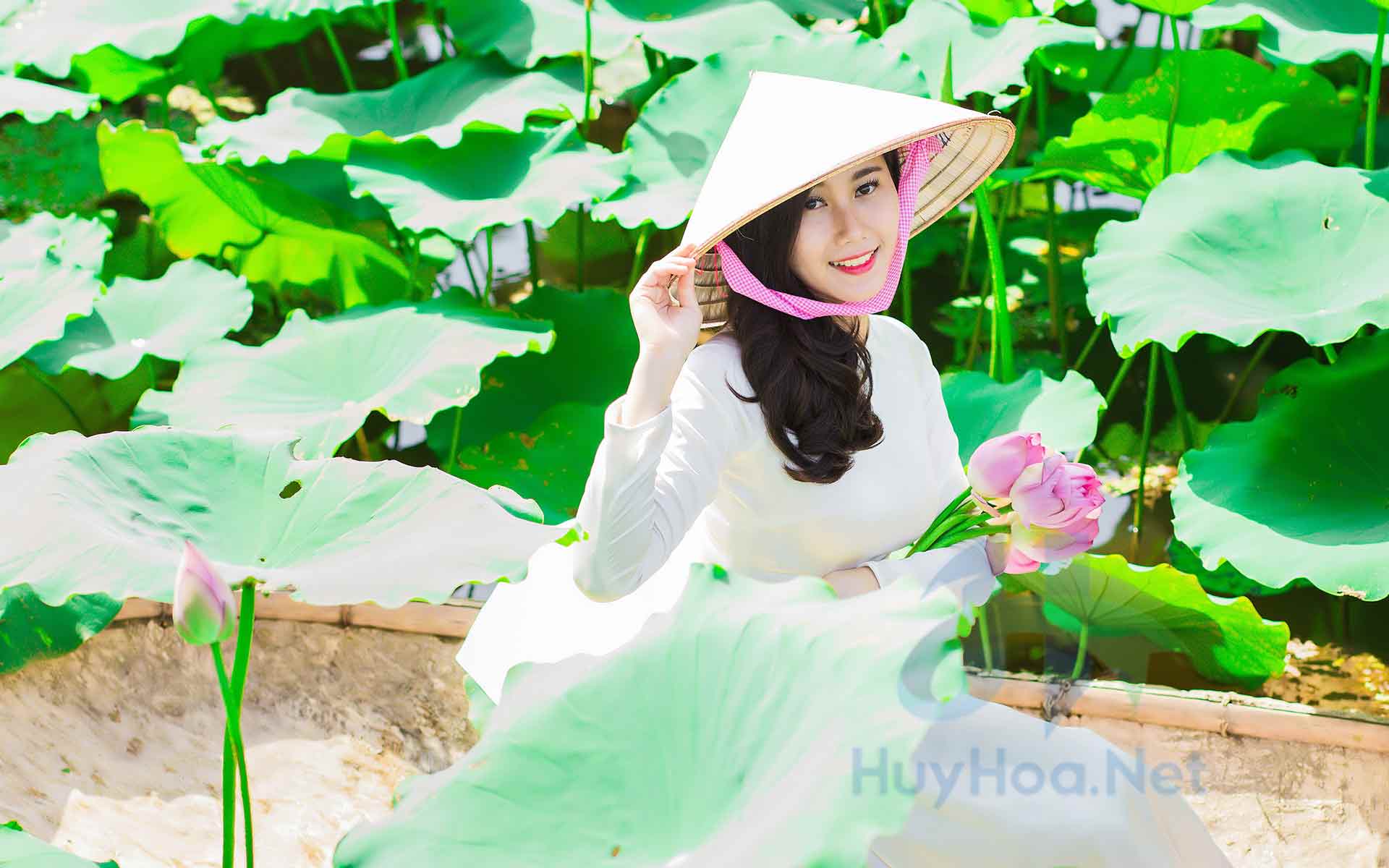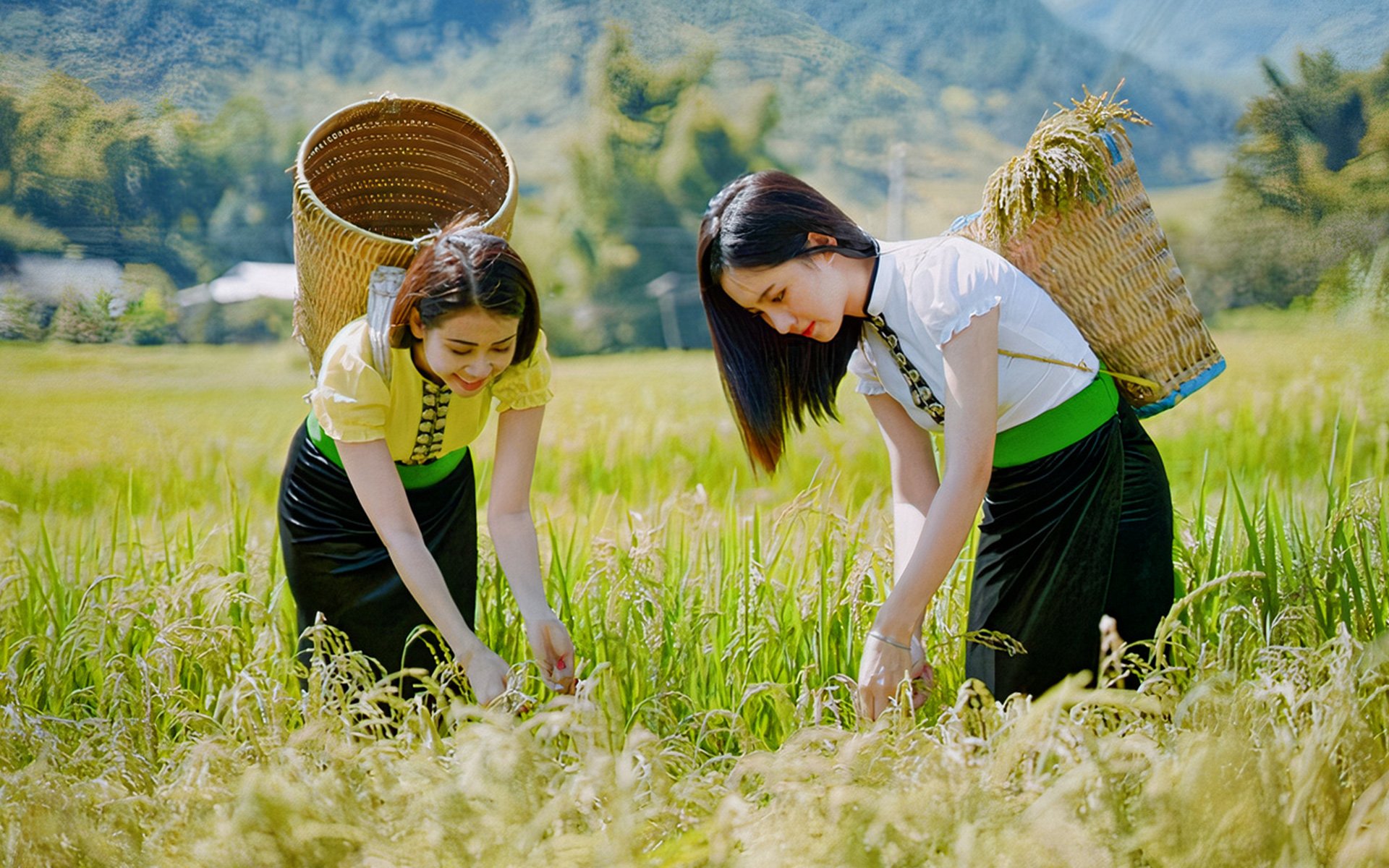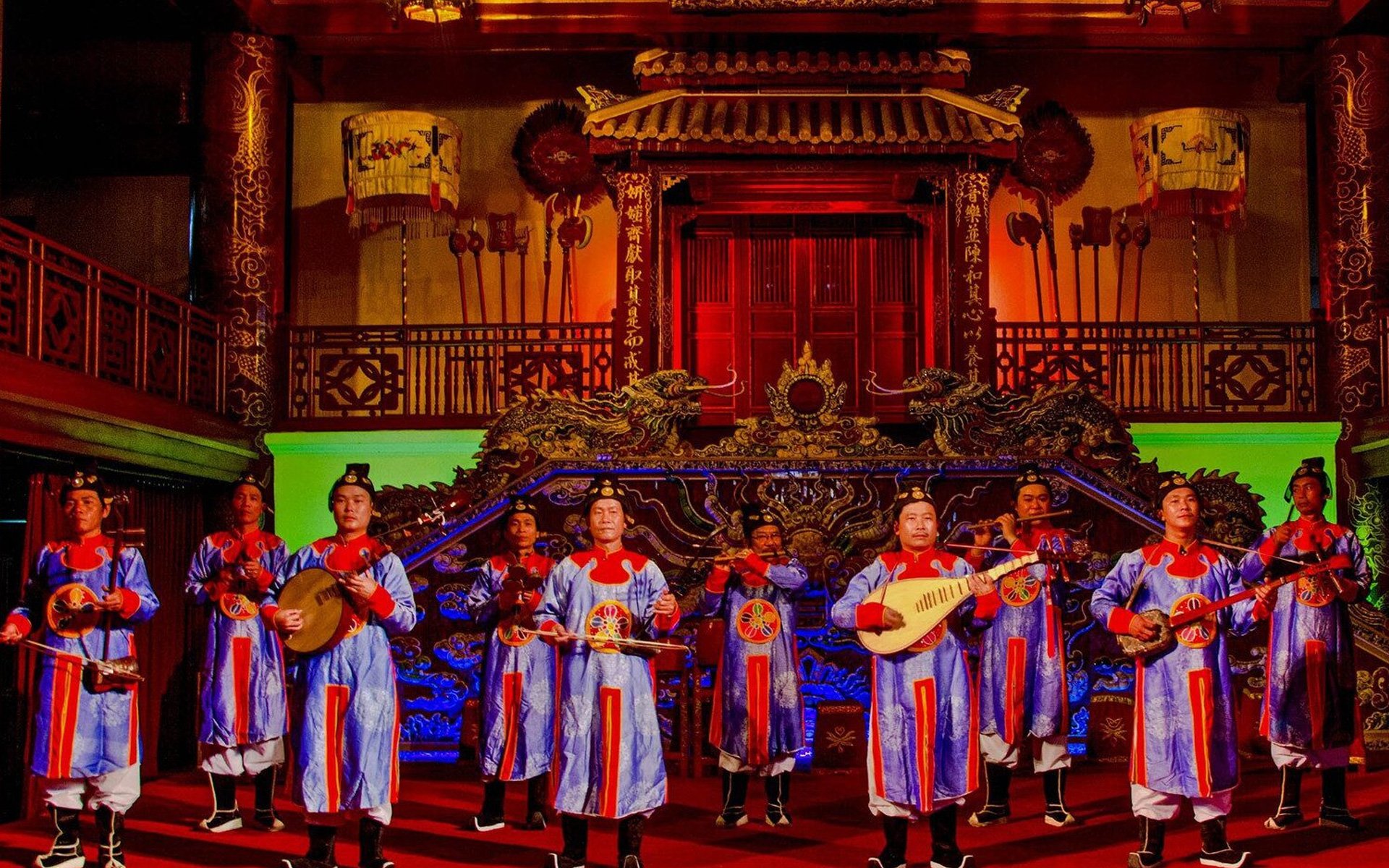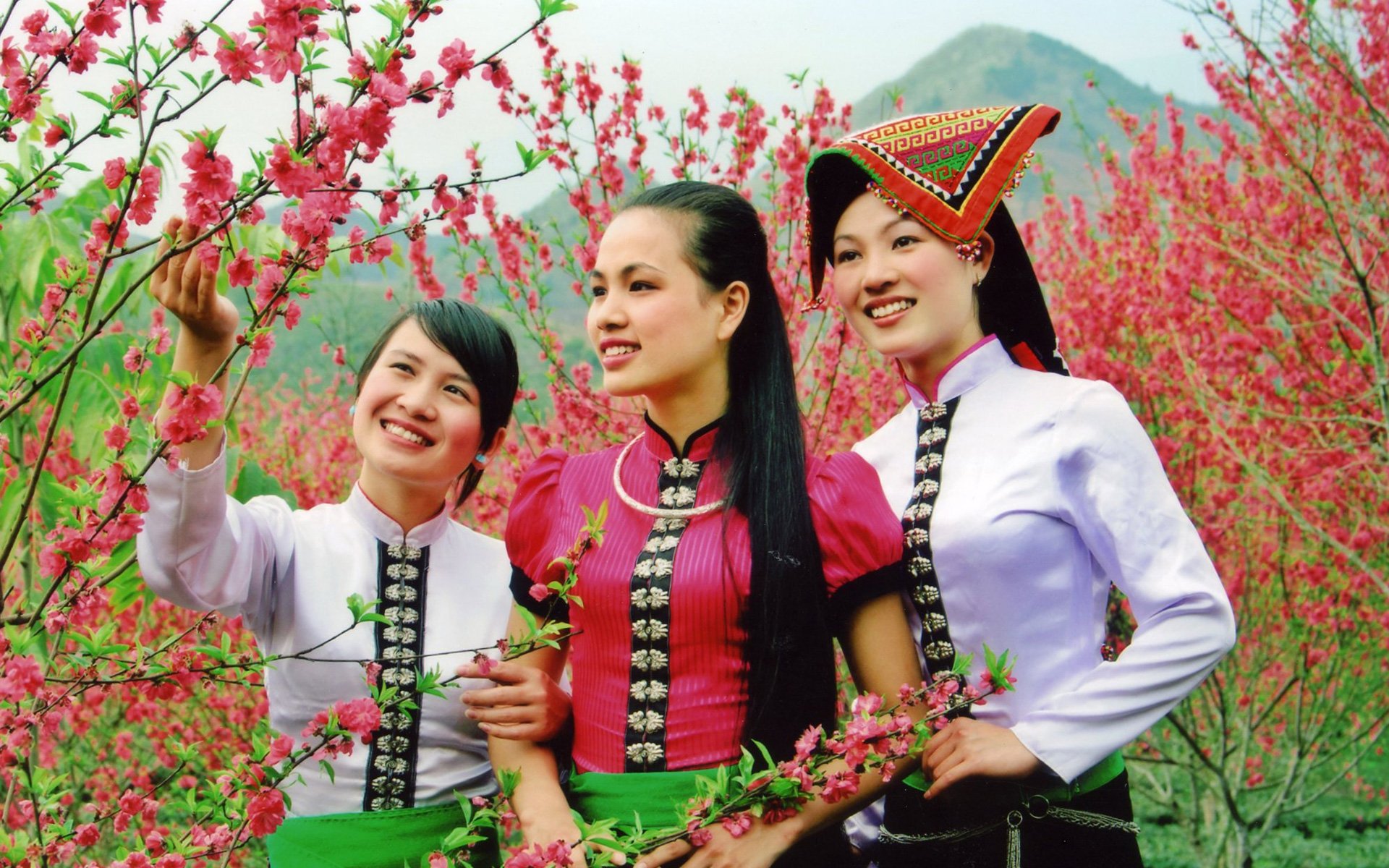Along with Ao Dai, Conical Hats, many other world-famous Arts, Vietnamese Culture with unique wet rice characteristics, is worth exploring. Read on to learn more about the culture of Vietnam.
Table of Contents
A typical family in Viet Nam has three to four generations living together under one roof. Many families desire to have many children and grandchildren because they believe that more children equal more wealth.
The Vietnamese consider family as the foundation of society, so family and clan are always given the most importance, more than individualism.
Confucianism and the feudal view on male preference influence men’s roles in the family. They always have the last word. Feudal ethics shape women around “three obediences and four virtues.”
These are obedience to their fathers as children, their husbands as married, and their sons in widowhood. The four virtues can be understood as housework, appearance, speech, and virtue of a woman.
In order to ensure that family relations are more equal, the State of Viet Nam adopted several legal documents since reunification.
Diverse measures have been taken to increase awareness, change outdated attitudes, fight for women’s legitimate rights and ensure gender equality.
The Vietnamese family size is now two to three generations. The majority of couples have two children.
Slowly, the argument for men’s superiority to women is fading. The time-honored tradition that “respect for the elderly” and “love for the children” is still being promoted in every Vietnamese family.
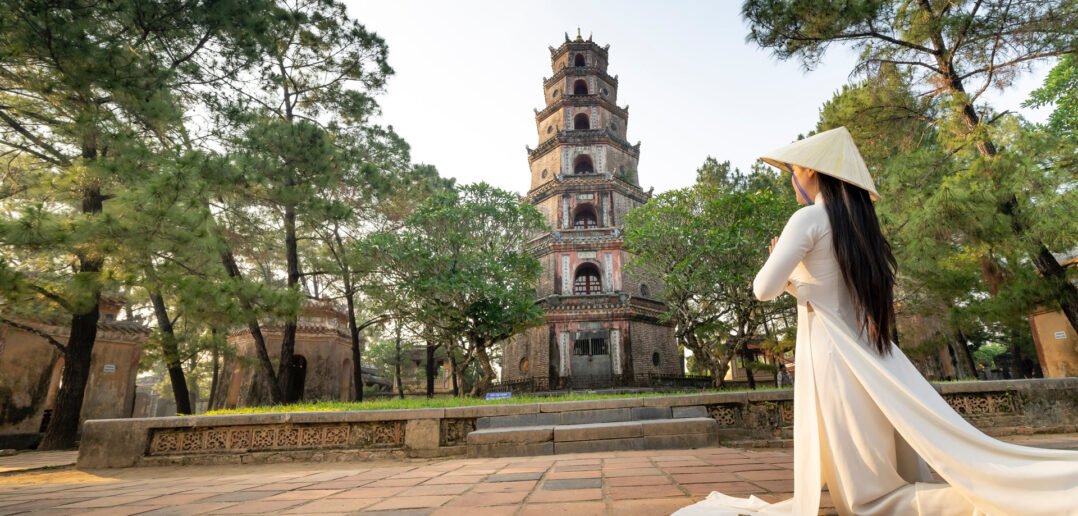
Ancestor Worship
Vietnamese ancestors are thought to still exist in another realm. It is believed that living beings have to take care of their needs. In return, the ancestors offer advice and bring good luck.
A small altar is found in nearly all Vietnamese homes. It’s used to connect with the loved ones who have died. It is used to offer fruits, wine, and votive paper. The altar is lit with candles and incense.
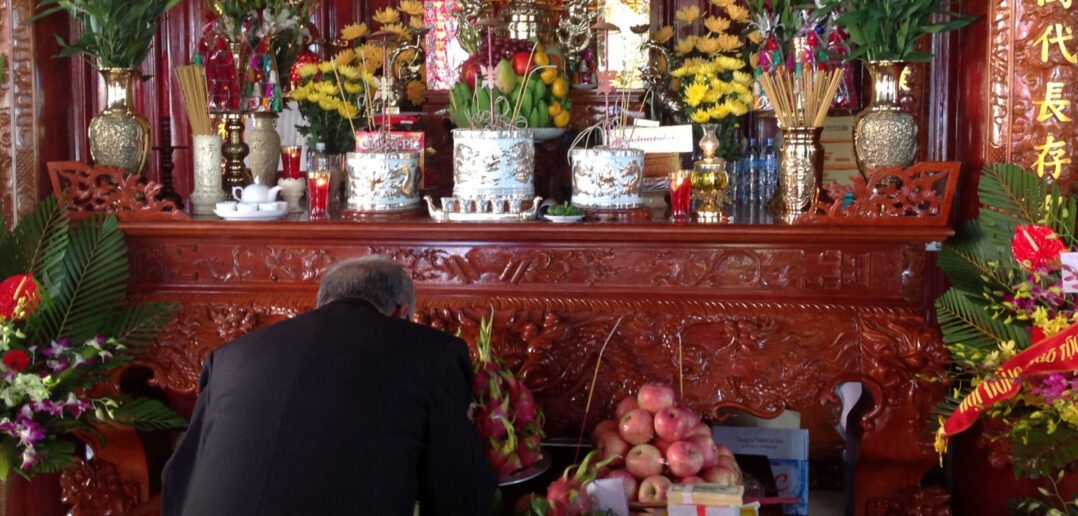
Burning votive paper
Friends and tourists often ask why Vietnamese people burn votive papers. It’s hard to explain exactly, but they can be said to be gifts to their ancestors.
After the ashes have been burnt, a small amount of wine is sprinkled on them so that spirits can ascend to Heaven and bring gifts to their ancestors.
This ritual occurs on specific days, such as festivals and new or full moon days.
The practice of burning votive papers to reduce waste is being gradually eliminated in order to keep up with urban trends.
Animist beliefs
The popular Vietnamese culture saw the animistic folk faiths as merged with or supplanted religions like Hinduism and Buddhism, Confucianisms, Taoism, Christianism.
Animists believe souls or spirits can exist in nonhuman entities as well. All phenomena and forces in the universe, as well as human fates, are controlled and managed by the spirits and souls of the deceased.
Numerous gods, such as the sun, moon and land, rivers, lakes, rivers, and trees, have been worshipped since ancient times.
If they are propitiated they provide protection for the living; if not, they cause misfortune.
Animism is more prominent in Vietnam’s highlands than it is among the ethnic communities.
Because Vietnam’s lives revolve around agriculture, many Vietnamese communities perform monthly or annual rituals to ask the gods for blessings on planting and harvesting.
Co To families hosts a ceremony before each new crop to thank the forest wizard for providing food and clothing. The offering includes wine and chicken, fish, steamed rice, and fruits.
Worship God of Wealth in business
Than Tai (God Of Wealth) is considered a “benefactor” who brings good fortune to a company. You should place the altar in a ventilated area. It could be located in the corner of your house or right in front.
This is why small altars such as this are found in almost all shops, restaurants, hotels, and boutiques in Vietnam.
Etiquette
Vietnam is a country that values polite behavior. Respecting elders is a key component of politeness. Respect is shown by younger people when they interact with seniors.
Parents should regularly instruct their children about the proper use of hierarchical terms. The common salutation Chao should be used by younger people when meeting older people.
Prerevolutionary customs required that juniors bow to or kowtow their seniors. However, the revolution has mostly eliminated these practices.
Many seniors feel today that the revolution caused a general decline in politeness.
People of the same gender can often be found in close quarters in social settings.
Nowadays, both males, as well as females, will often sit or hold hands. However, it is not a good idea to have physical contact with people of different genders, especially if they don’t live together or are close.
Women should be more modest than men, avoid smoking, speak slowly, and dress modestly.
There are still many issues in society that cause controversy such as not queuing, jostling…
CUSTOMS AND ETIQUETTE IN VIETNAM
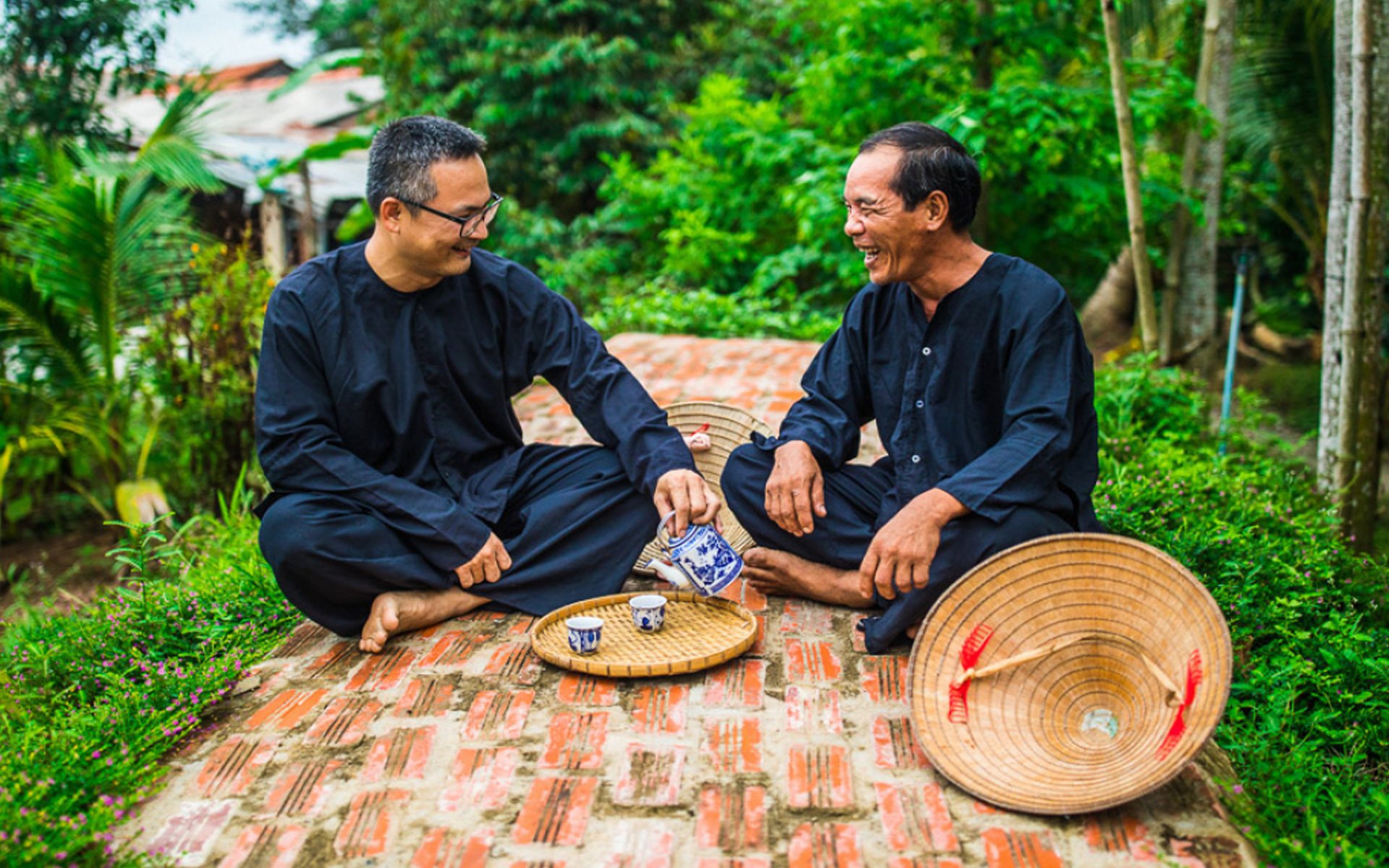
In Vietnam, the elderly have higher decision-making power and are entitled to be treated with respect.
When addressing a group, always address the oldest members first. People in Vietnam are expected to share their good fortune with each other.
Vietnamese are generally polite to tourists, particularly Americans even in rural areas,
Vietnamese children often shout Ong Tay (Mr. Westerner) and Ba Tay (“Mrs. Westerner”) at foreigners. Children love to touch the arms and legs of Westerners. This is completely normal and shows the hospitality of the children to visitors.
Northern Vietnamese are generally more polite, calm, and reserved than their southern counterparts, who tend to be more direct, open-minded, outgoing, and sometimes even rude.
Greetings
Vietnamese people greet one another by clasping hands and bowing to the other. In large cities, however, some men prefer to shake hands rather than join hands. Hugging is only for close relatives.
Vietnamese are known to avoid shaking hands with senior citizens or people of higher rank.
Men gently shake hands with one another and bow slightly when greeting the other.
Men bow gently and nod when greeting women. Some people bow in rural areas by raising their hands above the waist and bowing.
Modernized young women and men shake hands in urban areas. Vietnamese people often bow or shake hands when saying goodbye.
To greet someone in authority, clasp your hands. Introduce yourself to an older person when you introduce yourself to them.
A brief explanation about the relationship between them in the family is often used to introduce people. For formal addresses, you can use the title plus the first name to address someone.
You can also use honorific forms to address people with different relationships in Vietnamese. However, they are not used in English. To show respect for elders, Thua (meaning please), is added to the honorific name.
Traditional Vietnamese will bow to elders or superiors in order to show respect.
Public Customs
Public displays of affection are not permitted. The majority of Vietnamese people are not comfortable showing affection for their partner in sex.
In major cities like Hanoi and Ho Chi Minh city, a hug or kiss with your partner is acceptable. However, it is taboo in other places.
Sometimes a handshake can be acceptable when you meet Vietnamese who have the opposite sexual preference.
It is better to bow or nod your head than to touch the face. It is not a good idea to kiss someone on the cheek. It’s best to avoid touching the other sex member.
Close friends may hold hands or place an arm on the shoulder of someone of the same sex.
It has no sexual connotation, whether gay or not. You will see many girls, holding hands or linking arms on city streets.
A loud voice and excessive gestures are considered rude, especially if they are used by women.
Vietnamese people bow their heads to show respect and don’t look at elders or superiors.
Many people will refrain from voicing disagreement in order to avoid conflict or disrespect.
Sexy bikinis or bathing suits are only appropriate in places like the beach or the bedroom.
Taboos and Rude Behavior in Vietnam
Your luck for the next twelve months will be determined by what you do on New Year’s Day.
Avoid people who are in mourning. It is important to not visit or phone anyone on New Year’s Day unless you have received an invitation. Only funerals are permitted to wear a white headband.
Don’t touch or pass anything on someone’s head. Items should be handled in both hands. To get someone’s attention, don’t point your index finger or use it. This is how animals are called.
Also, don’t point your feet. It is not appropriate to summon a person with a finger or hand in an upright position. This is only for animals and inferior people. It is considered a provocation if it occurs between two people of equal status.
The only acceptable hand signal to summon someone is for the whole hand to face down. Sometimes, this can even be offensive.
Insults directed at elders or ancestors can be very serious offenses that can cause severe social ties.
Don’t place your hands on your hips. Cross your arms over your chest. Don’t touch someone on the shoulder.
Do not pat someone’s back, especially seniors or those of higher status. Winking can be considered indecent, especially if directed at someone of the opposite sex.
Vietnamese can arrive late at social events to avoid appearing too enthusiastic.
They are punctual for appointments in professional settings, however. You should never make promises you can’t keep.
This will result in losing your face. A breach of a promise could be considered a violation of social expectations. It can be very difficult to restore lost confidence.
Many Vietnamese smiles easily and often. This smile is not always interpreted as agreement or happiness. Vietnamese smile often when they feel embarrassed or uncomfortable.
Sometimes, smiling a lot and avoiding eye contact can be interpreted as aggression. Vietnamese laugh in ways that may seem inappropriate to other cultures.
This laughter is not meant to be ridiculed. It is not a form of ridicule to praise someone profusely. Most people are modest and will not accept praise.
For certain feelings, Vietnamese people favor non-verbal communication.
People in Vietnam prefer to express gratitude and apologies through nonverbal communication, such as a slight bow, or smile. If someone compliments you, they should not expect a thank-you.
Respectful behavior includes not looking at someone who isn’t of the same gender or status as you.
In Vietnamese culture, a smile is a powerful non-verbal way to show respect. A smile can be used to express regret or embarrassment for an innocent mistake.
A smile is the Vietnamese’s preferred response to situations where verbal expression is inappropriate or unnecessary.
To avoid being too enthusiastic, the smile can be used to replace: ‘I’m sorry, Thank you, or ‘Hi. To show empathy or compassion for the other person, a smile can be used to respond to harsh words or scolding.
Smiling can be used to express agreement, embarrassment, or disbelief, as well as appreciation or an apology.
Avoid taking photos of three people at once as it is believed to bring bad luck to those in the middle.
It is forbidden to ask questions about sexual matters such as: “How old are you?”, “Are you married?”, or “Do you have kids?” Why not?
If you’re over 30 years old and single, it’s best to say no and lie if asked. Otherwise, people will feel sorry. It is considered bad luck to not have a wife or children.
Vietnamese Gestures and Body Language
Body language and gestures common to Vietnamese:
- Nodding is a greeting, affirmative answer, or sign that you are in agreement.
- Shaking your head: Negative reply, a sign that you disagree.
- Bowing: Greeting or showing great respect.
- Frowning is a sign of anger, frustration, or worry
- The forefinger and the top of the thumb join to form a circle. Other fingers are upright (the OK sign). This signifies poor quality or zero
- Avoid eye contact: Shows respect for senior citizens in age and status, or the opposite sex.
- Crossing the middle finger over the forefinger, or the forefinger crossing the middle finger (crossed fingers), is an offensive gesture.
- Middle finger-pointing, fingers closed (the finger),: This gesture has no meaning and is not an obscenity.
- Thumb up or thumb down, with the other fingers closed: No meaning.
- Crossed arms are a sign that you respect others.
- Keeping one or both of your hands in your pockets or hips while you talk: This indicates arrogance or lack of respect.
Smiles and Eye Contact in Vietnam
Nonverbal behaviors are often a way to show respect. Vietnamese students who listen attentively and sit quietly to the teacher are trying to show respect for their teacher.
Some American teacher has misinterpreted this behavior as non-responsiveness and passivity. The Vietnamese student does not make eye contact with the American teacher while speaking or listening to him.
This is also in respect. A person acting this way, according to American standards, would be considered suspicious, unreliable, and mischievous.
However, in Vietnamese culture, it is considered a challenge to look into someone’s eyes, particularly if they are of a higher social or familial status or gender.
Respectful behavior includes not looking at someone who isn’t the same gender or an equal.
Another nonverbal symbol that conveys respect in Vietnamese culture is the smile. Although it can be difficult to see for Americans, a smile is a common expression of gratitude.
The smile can be used to express regret for minor offenses, such as being late for class or embarrassment for an innocent mistake.
The Vietnamese consider the smile a good response to most situations where verbal expressions are not necessary or appropriate.
It can be used to replace “I’m sorry”, ‘Thank you or “Hi!” To avoid being too enthusiastic, it is used in place of an “I’m sorry”, “Thank you” or “Hi!” Smiling is a good way to respond to harsh words or scolding.
It shows that one doesn’t harbor any ill feelings towards the other person or that one has sincerely acknowledged the error or fault.
Teachers and parents never thank their students for small acts of kindness, like closing the windows or handing out books.
In this instance, a smile is sufficient. A person who compliments someone does not expect a “thanks” back.
Vietnamese women, especially, often cover their mouths while speaking or laughing to show modesty.
Home Customs and Gifts in Vietnam
If you enter a Vietnamese house, make sure to take your shoes off. There is limited space and people prefer to socialize on the floor than on chairs.
Many house guests receive mangosteens, black tea or Vietnamese tea, and other sweet treats.
If you are invited to a Vietnamese family:
- Bring fruit and sweets, flowers, fruits
- Gifts should always be wrapped in colored paper and not white.
- Don’t give handkerchiefs or anything black, yellow, or chrysanthemums.
Gift recipients are expected to show significant gratitude. Sometimes, this can last a lifetime. A gift may cause some to be reluctant to accept it due to the burden of gratitude.
Vietnamese people may decline a gift at the first opportunity, even if they want it.
Eating Customs in Vietnam
Instead of Western meals that are broken down into different courses, such as an appetizer, main course, and desserts, Vietnamese meals are usually shared and served together.
Vietnamese families would usually eat together on the floor or table, with each member having their own rice bowl and utensils.
They would use soup spoons for soups, and chopsticks for stir-fried or rice dishes. Vietnamese spring rolls, and similar items, are considered finger food (eating by hand).
The Vietnamese prefer to eat out of bowls, and they use chopsticks as well as spoons. You shouldn’t stick chopsticks in a bowl of rice. Death is symbolized by chopsticks sticking out of a bowl. Chopsticks placed on the bowl signify that you are done eating.
Some parts of Vietnam require that people eat with their hands. All dishes other than individual bowls of rice must be shared at the center of the table.
Family members must wait for the oldest to start before starting the meal, and the women will sit next to the rice pot to make rice for others.
As an act of love, they also take food to one another.
When eating with Vietnamese
- Please wait to be seated
- The oldest person should be seated and served first
- Use both hands to pass dishes
- After every mouthful, or whenever you are about to finish drinking or speaking, chopsticks should be placed on a table.
- When eating, people often keep bowls in front of their faces.
- While you are eating soup, hold the spoon to your left.
- When using a toothpick remember to cover your mouth.
Blowing your nose at the dinner table is considered a repulsive act.
Wait for the head of your family or the oldest member of the family to eat first when you are dining with Vietnamese families.
The woman in charge of the home then takes the food out on trays. Young men often eat alongside their mothers, while children and women eat together.
Guests are expected to give a short speech to express gratitude to their host.
Drinking Customs in Vietnam
Vietnamese Tea (also known as Tra by the locals), is the most widely consumed beverage in Vietnam. Vietnamese make enough tea to last them for the entire day. You can also have tea before or after meals.
Although most Vietnamese prefer green tea, there are black and fermented options that can be found in urban areas. The country also grows and markets coffee.
The Vietnamese famous drink of coffee, “Ca phe”, is made by combining Vietnamese roast coffee with condensed dairy milk. It can be served hot, or cold, depending upon your preference.
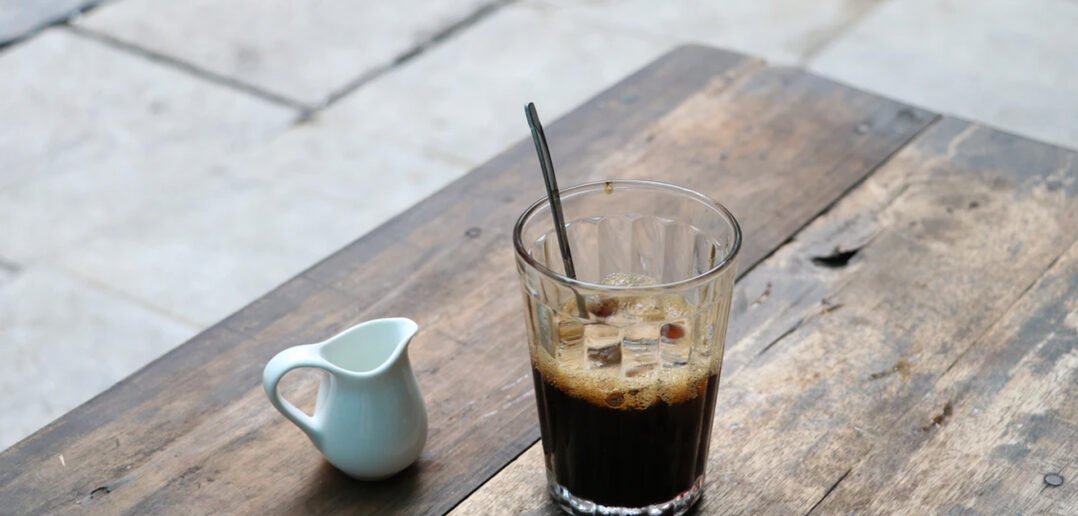
Vietnam is considered a country that popularizes coffee around the world because of the extremely cheap price of coffee here.
In big cities, there are many sidewalk cafes for less than $1 a cup of iced milk coffee. If you come to Hanoi, you should also try egg coffee, a special coffee here.
Religion and philosophy of Vietnam
Religion in Vietnam
Tam Giao is the combination of three major religions in Vietnam, Confucianism: also known as Confucianism in China, Buddhism comes from India, Taoism: also known as Taoism in China
Many Vietnamese visit Buddhist pagodas regularly, with as high as 85%. However, many Vietnamese aren’t merely Buddhists, but they also practice a combination of all three religions.
In Vietnam, the ideology of Tam Giao is a central part of culture and worldviews.
Buddhism
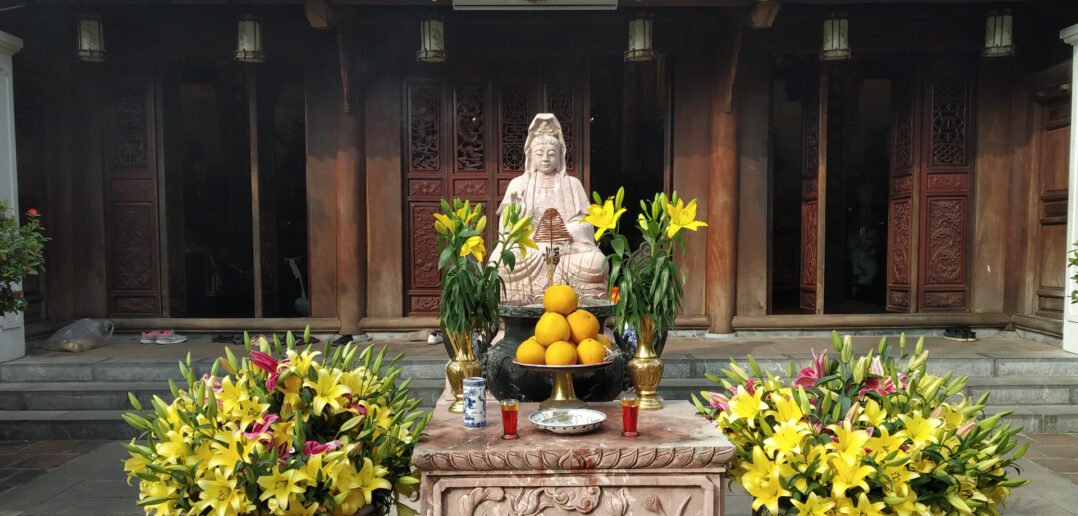
In Vietnam, Buddhism was first introduced in the second century BC. It became the state religion during the Ly Dynasty (1010-1214).
However, it lost its status as a state religion but was still the belief of the majority of Vietnamese people and permeated Vietnamese culture.
Although most Vietnamese would consider themselves Buddhist today, not all Vietnamese actively participate in Buddhist rituals at pagodas.
Mahayana Buddhism is the predominant form of Buddhism in Vietnam. It is also popular in China, Korea, and Japan.
Theravada Buddhism is practiced in South Vietnam and the Mekong Delta region by ethnic Cambodians (Khmer Krom).
Confucianism
Confucius, between 551 and 479 BC, founded Confucianism in China. Confucius believed in the importance of moral improvement and that it was crucial to the well-being of society.
Confucianism, strictly speaking, is not a religion. It is a code for social behavior.
The emphasis is on living a life that is ethical and not about God. The Vietnamese family view is dominated by Confucian values.
Confucianism was introduced in Vietnam during Chinese dominance. Although it began to decline with the French conquest, it continues to have an influence on the thinking and behavior of Vietnamese people.
Daoism
Daoism comes from the Chinese word “dao”, which literally means “way” or “road”. Daoism, like Confucianism and other religions, originated in China. It began as a philosophy.
Between 600 and 500 BC, Laozi founded Daoism. Confucius said that he had the chance to meet Laozi and that he spoke highly of him.
Confucius was concerned with creating harmony in society. Laozi, however, was more focused on harmony between man, nature, and the pursuit of ‘the way’.
This state of harmony cannot be achieved through confrontations. Instead, it must be achieved by practicing the virtues of simplicity and patience.
However, his teachings were transformed by his followers into a religion with clergy and church in the centuries that followed Laozi’s passing. It allows communication with spirits, deities, and the dead.
Philosophy of Vietnam
Vietnamese thought mixed beliefs and primitive cognitions of materialism and dialectics at the beginning.
The Vietnamese philosophy was born from an agricultural culture, which values stillness over movement.
It is closely linked to natural phenomena and was characterized by the doctrines of yin, yang, and the five basic elements. This lifestyle is a moderate one that favors harmony.
After the conciliation of Buddhism, Confucianism, and Taoism was completed, it contributed to the growth of Vietnam’s society and culture.
The Tran Zen-Buddhists were able to interpret most of the philosophical topics that Buddhism had presented (Heart-Buddhist, being or not being; life and death) in a unique and distinctive way.
Confucianism was a popular form of Vietnamese Confucianism, however, not all Vietnamese Confucianists embraced Mencianism and Confucianism. Instead, they adopted the spirit and principles of Buddhism and Taoism to open up their ideas, make them more accessible to the people, and be more in harmony with nature.
Deep feudal ideologies were imposed upon farmers and bound women by autocratic dynasties.
However, village democracy and primitive communities still existed on the basis of self-supplied farming.
The traditional Vietnamese had many of the positive characteristics and traits that farmers’ thoughts brought to the Vietnamese agricultural society.
Farmers were at the heart of rebellions and wars against foreign invaders. Many skilled generals, including Quang Trung, who was the hero of the common folk in the 18th century, were a result of farmers.
In the Nguyen Dynasty, the policy of facilitating agriculture and restricting trade was a dominant one. This policy impeded the growth of the city dweller’s consciousness.
The Vietnamese had a history of placing education and agriculture as their top priorities. They also had a low opinion about business people. Other trades were considered minor, even cultural activities.
After the decline of Vietnamese feudalism and Chinese civilization, the colonialists’ guns led to the introduction of Western culture into Vietnam in the 19th century.
Due to colonial exploitation, the working class was formed at the beginning of the 20th Century. In Vietnam, Marxism-Leninism and patriotism were introduced in the ’20s & ’30s.
This combination led to the country’s independence, democracy, and socialism. Ho Chi Minh was the representative of this era. He was honored by the international community as a hero of Vietnamese national liberation and UNESCO as a great man of culture.
In the first half-century of the 20th Century, the ailing national bourgeoisie was unable to implement many partial reforms.
Vietnam didn’t have its own philosophical or ideological system, and it lacked world-class philosophers. However, this does not mean that Vietnam does not have the right ways of living and ideologies for its people.
The village community is the most distinctive characteristic of an agricultural society. It has many long-standing primitive vestiges that have shaped the characteristics of the Vietnamese.
These were the thoughts of dualism, which was a concrete way to think that was more influenced by emotions than rationalism. It preferred images over concepts. It was flexible, adaptable, and conciliatory.
This way of living values emotional attachment and family ties. This way of thinking was conducive to settling disputes and conflicts through negotiation, harmony, and the use of relations.
This method of living was able to adapt to the situation. It has been proven to be successful many times over in history in using suppleness instead of firmness and weakness to resist force.
The Vietnamese are highly devoted to “Benevolence”, and have closely combined it with “Righteousness”, and “Virtues”. No benevolence or righteousness is equivalent to any virtues.
Nguyen Trai described the Vietnamese concept for Benevolence and Righteousness in Vietnam as the opposition against violent violence. This was used to build the foundation for the government’s policy of saving and ruling the country.
The Vietnamese knew that loyalty meant being loyal to the country, which was more important than being loyal to the ruler.
They also respected Piety but were not being bound by the family’s framework.
Happiness was also a top social value; people often complement the happiness of a family over wealth or social position.
Vietnam must overcome its cultural shortcomings, such as conservatism, parochialism, and egalitarianism, in order to be able to industrialize, modernize, and integrate into the international community.
Traditional costumes of Vietnam
Ao dai is Vietnam’s national traditional dress. It is a silk tunic and pants that can be worn by both men and women. Ao dai can be worn on special occasions, such as Tet, which marks the beginning of the new year. Vietnamese have worn modern clothing since the 20th century.
The Ao Dai is a long, silky tunic that can be worn over pants.
Vietnamese Traditional Dress for Female
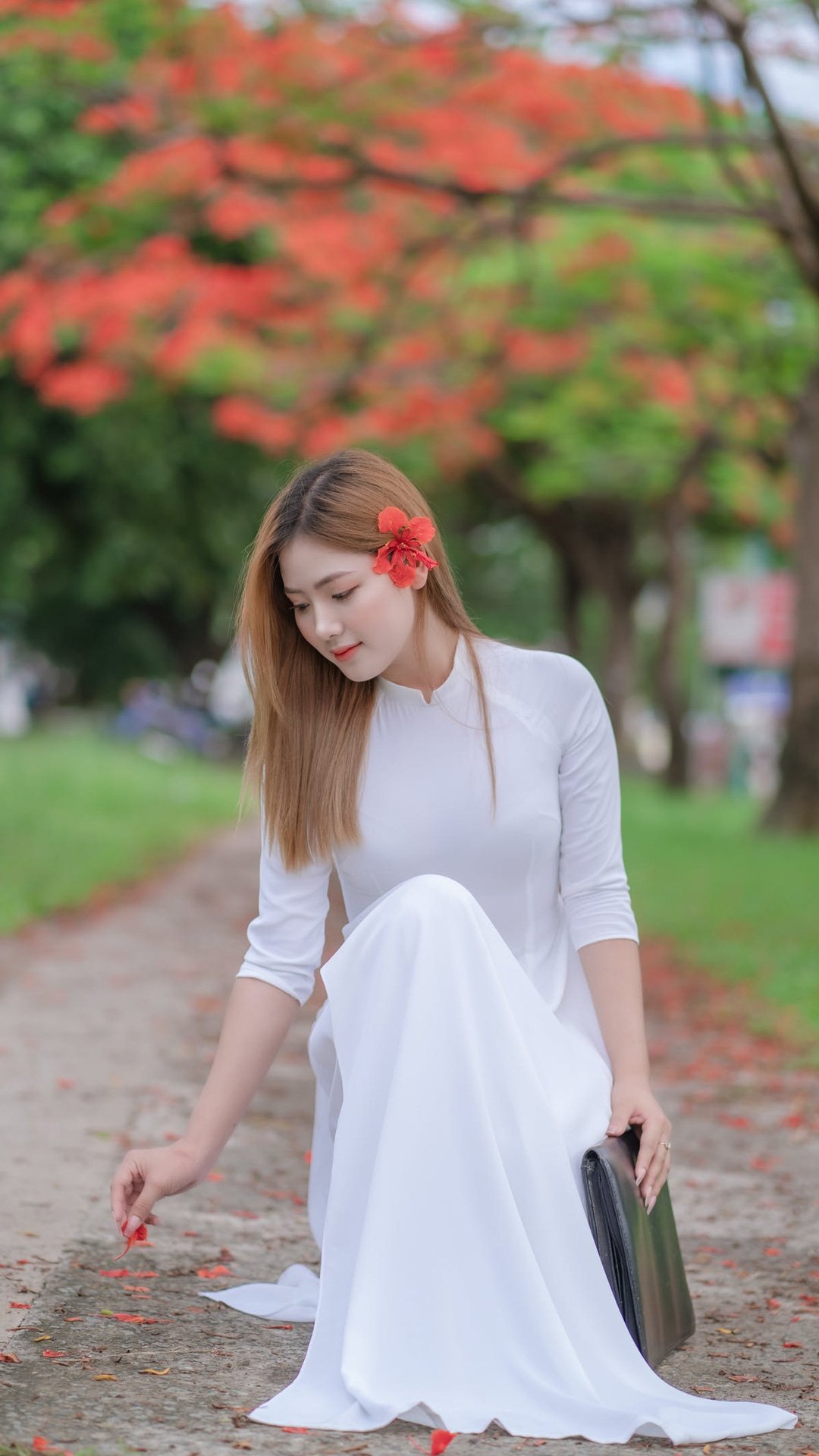
Long ago, the Ao Dai (Long-silk tunic) was the traditional Vietnamese dress. There are several types of Ao Dai.
The four-part flowing tunic was made with two front flaps that were equal and women could tie them together.
The five-part flowing tunic, on the other hand, had a small flap that was buttoned onto the right side.
Vietnamese Traditional Clothes in North Vietnam
Every region in Vietnam has its own style for flowing tunics. In the North, for example, the four-part (known as Ao Tu Than Vietnam) is worn by females with a long skirt.
Ao Tu Than can be worn with Non Quai Thao, a large hat made from leaves.
Tourists can now only see Vietnamese women in Ao Tu Than singing along with Non Quai Thao at traditional performances like Cheo or Tuong. Sometimes, women wear a scarf instead of Non Quai Thao.
This combination was traditionally worn by the female on the farm.
Vietnam Traditional Dress in Central Vietnam
Ao Dai is still worn in the South of Vietnam and the Central Region. The Ao Dai is a long, flowing tunic made up of two parts. It is worn over loose-fitting trousers.
These pants can be found in black, white, or colored dyes. From the waist down, the dress is divided into a front panel and a back panel.
Because it highlights all the beauty of a Vietnamese woman, the Ao Dai “covers everything but hides nothing”. On a Vietnam school tour, you will see the Ao Dai-clad student girls.
The cone-shaped hat, also known as “Non La”, is worn to protect from the sun’s heat, rain, and other everyday situations.
Vietnamese conical palm hats can also be used in Vietnam as fashion accessories or souvenirs. Because people used to write poetry on them, they are often called a Non Bai Tho.
Conical palm hats are easy to find in Vietnam, but they are highly recommended for Hue Citadel, where the first Non Bai Tho was developed and created.
Vietnamese Traditional Women’s Clothing, Mekong Delta
Ao Ba Ba, the traditional clothing companion of the Mekong Delta women since long ago, is Ao Ba Ba.
The shirt instantly brings back memories of rural women’s warm hearts, natural beauty, and gentleness. Ao Ba Ba is a collarless shirt.
The back is made from a piece of cloth. The front body is composed of two pieces. In the middle, there are two straps that run from the top to the bottom.
Ao Ba Ba is a clinging shirt that can be worn on the body. It is often worn with long, black, or white trousers to highlight the beautiful curves of Vietnamese women.
Traditional Vietnamese Costumes for Men
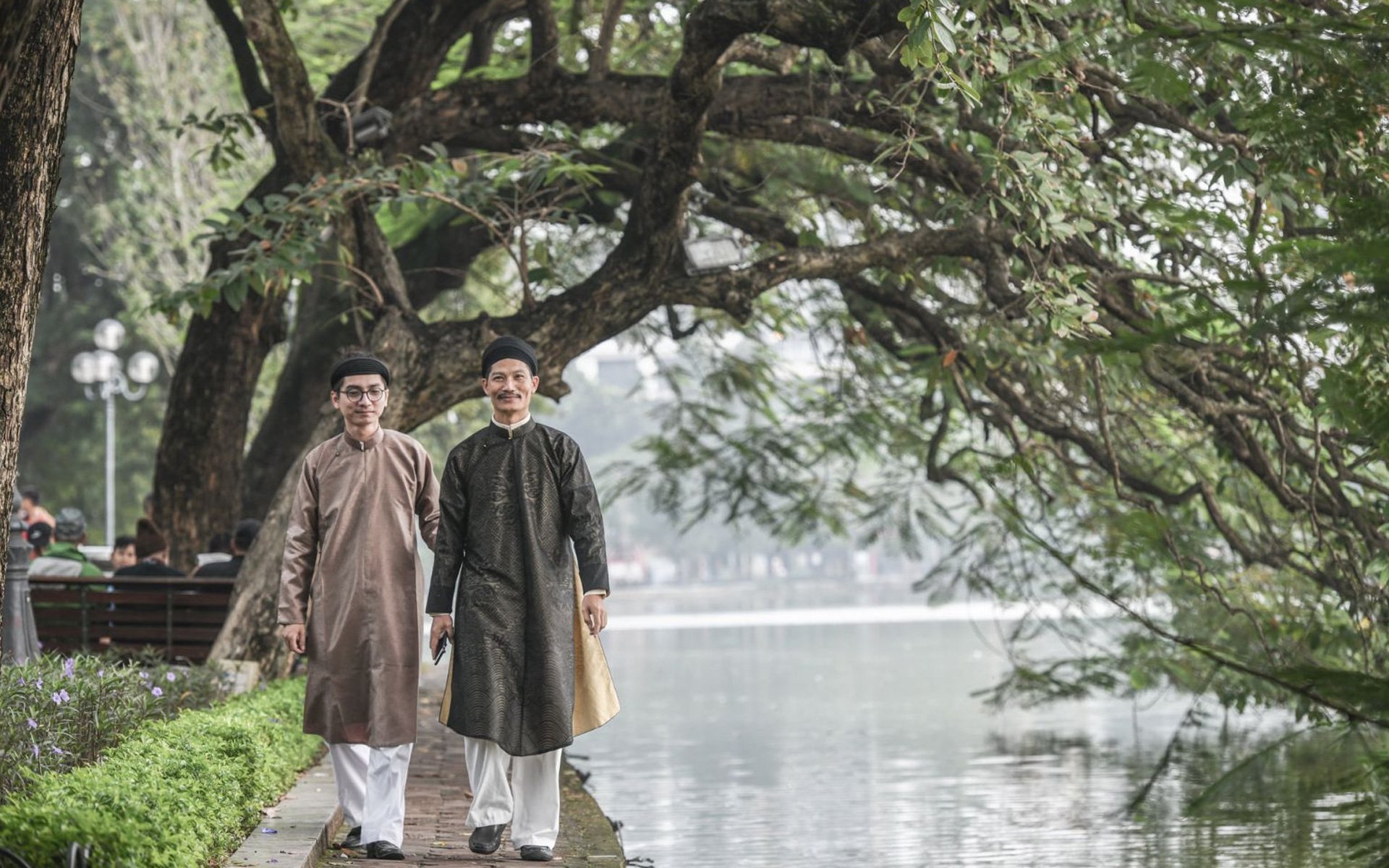
You will immediately recognize the similarities between the traditional Vietnamese dress for men and the beautiful costumes Ao Dai wore by Vietnamese women.
Both costumes are made from the same fabric and have the traditional snug collar. They are buttoned down on the left side of the waist and have no crease in the front.
The only difference is that the male costume extends to the knees while the female goes to the ankles.
There were many options for men in the past, especially during the feudal period. This was due to their social status.
The national color is gold. The dragon embroidery on the dress represents the King. Blue is reserved for court mandarins of high rank, while purple is for those of lower rank.
Although Western clothing is now the norm in Vietnam today, the traditional Ao Dai, a symbol of Vietnamese culture, is still the preferred style for formal occasions like weddings and New Year celebrations.
You still have the chance to see Ao Dai worn by Vietnamese men on your Vietnam vacation.
Vietnamese Traditional Costumes for Ethnic Minorities
Vietnamese clothing is generally very diverse. Each ethnic group has its own style and the festival is the perfect occasion to show off all of them.
Although the traditional attire of all Vietnamese ethnic groups has changed over thousands of years, each group has retained its unique characteristics.
Traditional costumes of the Thai Ethnic Group
The dresses of Thai women are very elegant and honor the delicate beauty of their girls.
The traditional Thai costumes for ethnic women include a simple blouse and long skirt with embroidered brocade motifs.
The sun, flowers, and dragons are the most popular motifs. The costume can be complemented by belts and Pieu scarves, along with some silver jewelry.
Traditional clothing of the Hmong ethnic group
H’Mong people have traditional costumes that are sophisticated and colorful. They are usually made from linen, which is often highlighted in various colors.
An outfit includes a black shirt, a colored skirt, leggings, and headgear. H’mong women wear a beautiful, prominent H’mong dress.
They often add silver coins or beads to the dress to enhance its aesthetics and express their traditional spiritual will.
Cham Ethnic Group Traditional Dress
Although not as vibrant as the other clothing for women in Vietnam, the traditional Cham costumes are very attractive.
The traditional tunic is considered the most beautiful and sacred clothing by Cham women. The complete costume includes a tight-fitting tunic and a matching skirt. A beautiful headscarf is also included.
The waistband, which is tied around the waist and across the chest, is the highlight of the costume. It is adorned with intricate details and golden iridescent colors.
This traditional costume is very attractive and has a graceful step.
Other ethnicities often wear skirts or trousers in mountainous regions. Indigo vests are made with indigo motifs that imitate wildflowers and beasts.
Some ethnic minorities have a tradition of young women making skirts and vests in beautiful, colorful decoration. This style is suitable for farming in terraced fields or traveling up hills and mountains.
Most of the ethnic Vietnamese dress is handmade by women from the village and meticulously embroidered by them. Many ethnic traditional textile villages in Vietnam are currently being invested to preserve and develop
These traditional costumes are sometimes sold at night markets to make extra money, or for gifts for family and friends.
The traditional Vietnamese costumes are simple and modest. The Vietnamese have had their clothing modified by foreign fashions over the years.
Some traditional clothes have been replaced with more modern and appropriate versions.
The unique Vietnamese dress is still a draw for tourists visiting this country with its stunning S-shaped shape.
Vietnamese Music & Dance
Traditional music from Vietnam was created very early. Since ancient times, Vietnamese have considered music an integral part of their lives.
The residents of Vietnam have created many musical instruments and musical styles over the centuries to express their emotions and gain motivation to do their daily work.
You can also enjoy the entertainment activities such as singing contests, epics, Đờn Ca Tài Tử, traditional music from the South, and traditional opera.
Traditional Vietnamese music is rich in diversity and syncretism, with a mix of native and foreign influences and influences from Vietnam’s ethnic minorities.
Although less influential than China, the former Indochinese kingdom Champa had a significant influence on Vietnam’s traditional music.
Imperial court music
Nhã Nhạc, the most well-known form of imperial court music is specifically the music that was played during the Tran dynasty and the last Nguyen Dynasty in Vietnam.
It was synthesized by Nguyen Emperors, which was the most advanced. Nha Nhac, Vietnamese royal court music is recognized by Unesco as Intangible Cultural Heritage of Humanity
The 19th-century imperial court of Vietnam had many royal dances that still exist today. These dances have the common theme of wishing the king longevity and wealth.
Classical music can also be performed in temples in honor of scholars and gods such as Confucius.
These are Nhã Nhạc (“elegant and ritual music”), Đại nhạc (“great music”), and Tiểu nhạc (“smaller music”) which were chamber music intended for the entertainment of kings.
Court dances in Vietnamese traditional dance were either Van Vu (civil servant dancing) or Vo Vu (“military dancing).
Folk music
Vietnamese folk music is very diverse. It includes Quan Họ, Dân Ca, Hát Chầu Văn, Ca Trù, Hò, Hát Xẩm… among others.
Cheo
Cheo is a type of musical theatre that is often humorous and includes dance. It was traditionally performed by northern Vietnamese peasants.
Although it is most commonly performed outside by semi-professional touring groups, the traditional setting is a square in a village or the courtyard of a public building, professional performers are also performing it indoors.
Xam
Xẩm, also known as Hat xẩm (Xam sing) is Vietnamese folk music that was very popular in the Northern regions of Vietnam. However, it is now considered an endangered form of traditional music in Vietnam.
Xam was performed in the dynastic era by blind musicians who walked from one town to another and made their living singing in public places.
Quan họ
Quan họ, or alternative singing, is very popular in Ha Bac (divided into the present Bac Ninh and Bac Giang Provinces), and throughout Vietnam.
There are many variations, especially in the Northern provinces. Quan ho, which is sung a cappella and used in courtship rituals, is improvised.
Hát Chầu Văn
Hát chầu văn, also known as hát văn, is a form of spiritual music that’s used to invoke spirits in ceremonies. It is rhythmic and trance-oriented.
Nhạc dân tộc cải biên
Nhac Dan Toc Cai Bien is a new form of Vietnamese folk music that was created in the 1950s following the establishment of the Hanoi Conservatory of Music.
The process involved the creation of traditional music using Western musical notation. Additionally, Western elements such as harmony and instrumentation were included.
Ca Trù
Ca Trù, also known as Hát ả đào, is a popular folk song that was sung by a woman who charmed her enemy with her voice.
Ca Tru is a variety of forms. It is believed to have originated at the imperial palace and then moved into performances at the communal houses for scholars, other elite members, and this is the most well-known type.
You can call it a geisha-type entertainment in which women who are trained in poetry and music entertain powerful men.
Hò
“Ho” is the southern version of Quan họ. It is improvisational, and it is usually sung in a dialogue between a woman and a man. The common themes are love, courtship, and the countryside. Can Tho, Vietnam is home to “Ho”.
Ritual music
- Nhạc đám ma – funeral music
- Nhạc lễ – court music
- Traditional musical instruments
- Đàn bầu (monochord zither)
- Đàn gáo (two-stringed fiddle with coconut body)
- Đàn nguyệt (two-stringed fretted moon lute)
- Đàn nhị (two-stringed fiddle with hardwood body)
- Đàn sến (two-string fretted lute)
- Đàn tam (fretless lute with snakeskin-covered body and three strings)
- Đàn tam thập lục (hammered dulcimer)
- Đàn tranh (long zither)
- Đàn tỳ bà (pear-shaped four-stringed fretted lute)
- Kèn bầu (oboe)
- T’rưng (bamboo xylophone)
- K’ni (also spelled k’ny or k’ný) – one-string vertical fiddle with a resonating disc that is held in the player’s mouth; played by the Jarai people of the Central Highlands
Typical Dances in Vietnam
Vietnam’s traditional dances vary depending on where you are. You may hear many different styles of music, but only a few types of traditional Vietnamese dances.
This is because the traditional Vietnamese dance plays an important part in Vietnam’s culture. It was possible to count on traditions that were still being maintained. Culture is vital in both history and music and dance.
TRADITIONAL DANCES IN VIETNAM
According to the traditions of each Royal House, the Vietnamese dances changed over time.
They were performed to offer the kingdom and to wish the nation a good fortune. This base is still respected today. Nhã Nhạc is a musical form that combines traditional and Western culture with Western customs. It even has female interpreters.
Dance movements are characterized by their dynamic and wide range of styles. The classic Hmong and Cham ballets can still be seen on holidays.
However, the popular Lion dance is celebrated in either the northern or southern regions of the country.
Vietnamese Arts & Literature
Vietnamese Arts
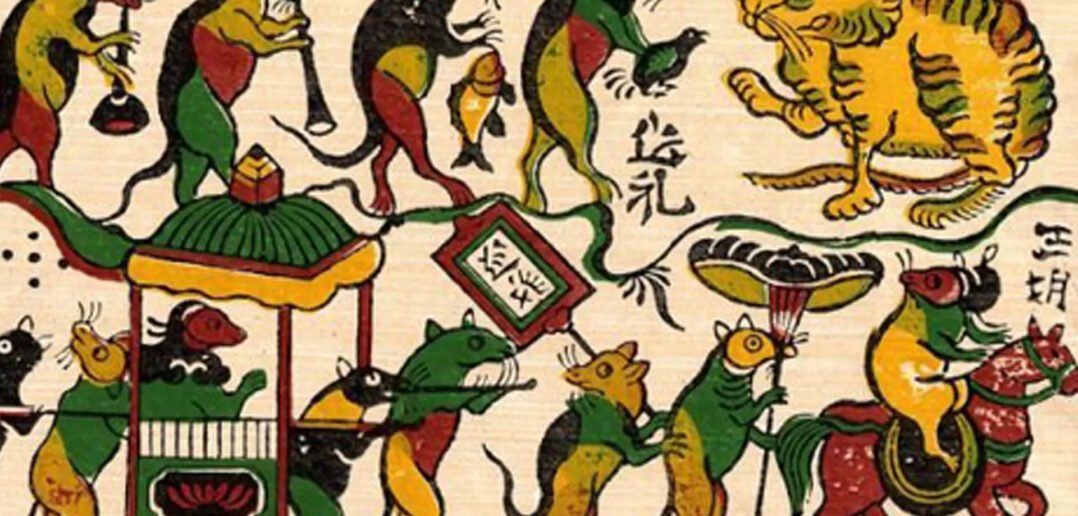
Vietnamese art is one of the most well-known styles in the world.
The unique styles of Vietnamese art, which range from simple clay pots made during the Stone Age to elaborate, modern installations that decorate the largest cities of Vietnam, have survived centuries of French and Chinese imperialism.
In this article, it will certainly not be possible to describe in detail the traditional art of Vietnam. We will have a separate article to research and discuss.
Historians believe that Vietnamese art dates back to 8,000 B.C. when pottery was made from clay by indigenous groups in Bac Son territory, about 160 km northeastern of Hanoi.
These surviving pieces are simple and plain. The Bronze Age was the first time that decorative “flair” appeared in Vietnamese art.
The Dong Son culture was a vibrant artistic community that flourished until the fourth century.
They produced the Dong Son drums which were bronze drums with intricately decorated decorations. These drums depicted everyday realities such as music, farming, and construction.
This intricate piece of Dong Son culture proves that early Vietnamese were skilled in cloth-weaving. Many preserved bronze drums show people wearing embellished clothing.
Vietnamese art has survived despite its turbulent past and has been able to maintain a uniqueness that has placed local artists on an international stage.
Anyone who visits Vietnam should not miss the artistic talent that is blossoming in this vibrant country.
Vietnamese literature
Vietnamese-speaking people are the majority of those who have created Vietnamese literature. Many written works are in classic Chinese because of the long dominance of Chinese.
Chữ nôm was created in the 10th century and allowed writers to write in Vietnamese using modified Chinese characters. By the middle of the 20th century, almost all works were written in Chữ Quốc Ngữ. The Tale of Kieu and Luc Van Tien are some of the most important works of literature.
Like the rivers that sustain Vietnam’s agricultural civilization over thousands of years, Vietnamese literature is fed by two major tributaries: Chinese literature and oral literature from Vietnam.
The oral poetry tradition is native. The oral poetry tradition is more ancient than the linguistic separation between the Muong and Vietnamese languages 1000 years ago.
It probably originated in the agrarian prayers that were common to the prehistory for the Mon-Khmer language families.
Even today, oral poetry is still being sung in the countryside. It continues to influence contemporary fiction and poetry. Its prosodic patterns and word stock are very similar to other languages.
Its main feature today is the lyrical and first-person, sung poetry “ca dao” (“folk balls”) but the oral tradition also includes third-person narratives such as the “ca trù” (“ceremonial Songs”) tradition in the north and the “vọng cổ” (“echoes from the past”) tradition south.
Literature from Vietnam is both oral and written. However, many critics consider the authors of Vietnamese literature to be part of the nation’s national tradition.
Vietnam was ruled by China for a millennium prior to the 11th century. As a result, much-written work in Vietnam during that time was in Classical Chinese.
The Nom characters were created in the 10th century and allowed writers to write in Vietnamese using modified Chinese characters.
It was initially regarded as inferior to the Chinese but it gained popularity over time. It was popularized by Vietnamese poets and writers in the 18th century when it became an official written script.
The Quoc Ngu script, which was first created in the 17th century, did not gain popularity outside of missionary groups until the early 20th century when the French colonial administration required its use in French Indochina.
Almost all Vietnamese literature was written in Quoc Ngu by the middle of the 20th century.
Martial Arts in Vietnam
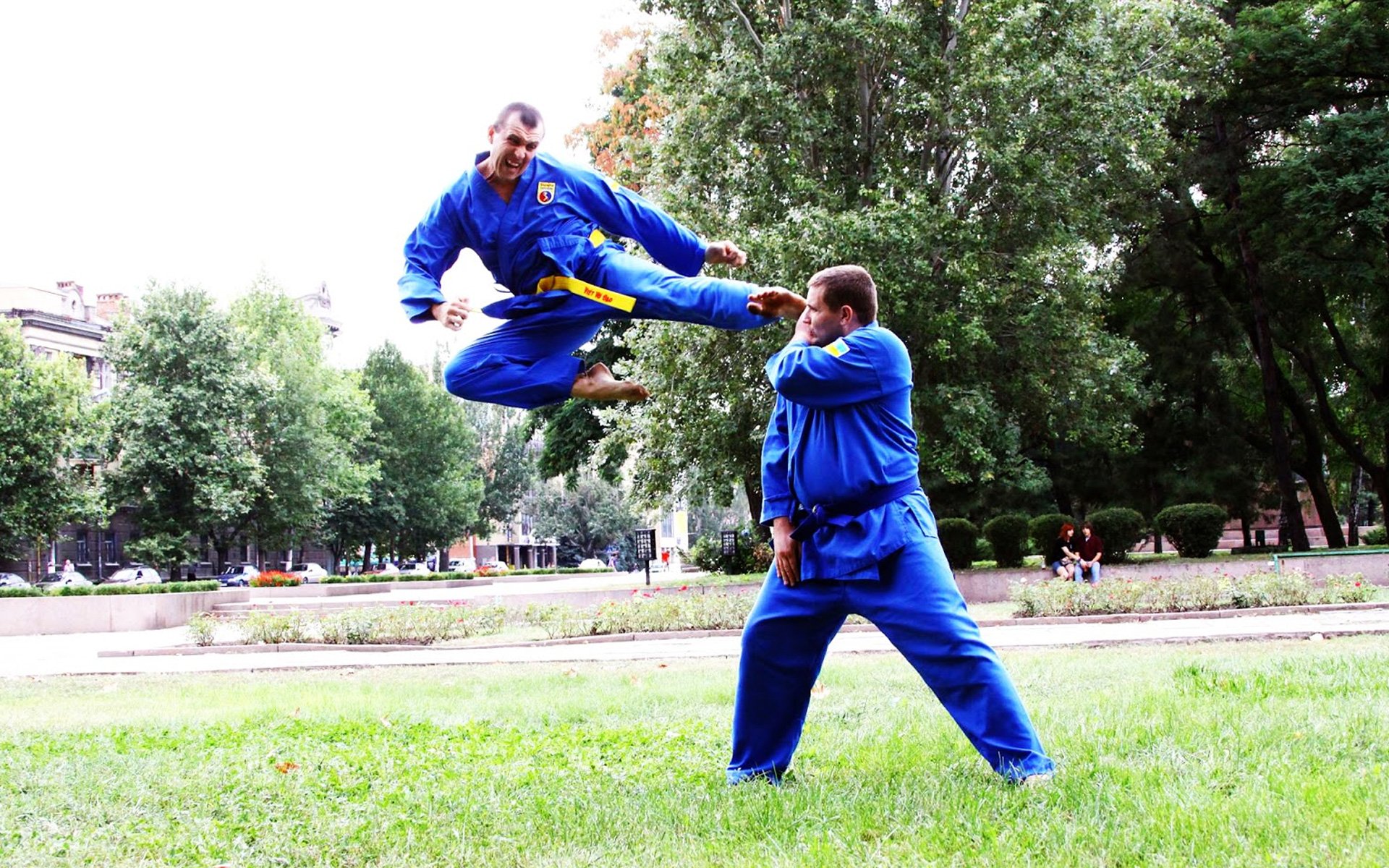
The origins of martial arts in Vietnam go back to when locals had to defend their homes against foreign invaders. For self-defense, the Vietnamese learned hand-to-hand combat skills as well as various forms of martial art.
Martial arts spread from Vietnam’s independence in the 16th century to the 18th century, when it was reunified.
The Land of the Blue Dragon was also home to martial arts from other Asian countries, which influenced further the development and implementation of local combat systems.
These differences led to many styles and adaptations in Vietnamese martial arts. Today, the emphasis is on entertainment, discipline, self-defense, and perfection of spirit.
History of Vietnamese Martial Arts
Since the beginning of history, the Vietnamese have been fighting back against foreign invaders. Many fighting methods were developed by common people to defend themselves against invaders.
Vietnamese martial arts can be found in two main forms, those which are practiced by ordinary people and those used by imperial officials.
French colonization in 19th century France was a crucial milestone in the development and practice of Vietnamese martial arts.
Many people were involved in the anti-French movement during this time and practiced traditional martial art. Many masters passed their secrets even after the movement was defeated.
Martial arts fell out of favor when modern weapons were introduced. However, Vietnamese still practice martial arts to encourage and strengthen patriotism and sportsmanship.
As more international martial arts schools have been introduced to Vietnam, Vietnamese martial art has begun to evolve further, incorporating techniques from these schools, while still adhering to the core values.
Characteristics of Vietnamese Martial Arts
Moral values
For Vietnamese people, practicing martial arts is not just about physical strength but also about developing one’s personality and moral values.
In traditional Vietnamese martial arts, the five following traditional Confucianism virtues are the top priorities:
- “Nhan”: compassion
- “Nghia”: justice
- “Le”: good manners
- “Tri”: intelligence
- “Tin”: honesty
Fighting techniques
Vietnamese traditional martial arts emphasize the use of flexible stances that are suitable for Vietnamese figures and physical strength.
One of the fundamental philosophies is to use your disadvantage to work against a stronger enemy; weakness against strength, small number against a large number, and shortness against height.
This resulted in practical stances, flexible attacks, and a strong defense.
Types of Vietnamese Martial Arts
There are many schools of traditional Vietnamese martial arts across the country, each with its unique characteristics.
They can be put into three main groups: Bac Ha Sect, Binh Dinh Sect, and Nam Bo Sect.
Bac Ha Sect (Northern Vietnam) – Vovinam
Master Nguyen Loc founded Vovinam (Viet Vo Dao) in 1938. Vovinam can be practiced with or without weapons and mainly involves countering the opponent’s attacks using their own force.
It was listed as an official SEA Games sport in 2011, 2013, and 2021 (But due to the impact of the covid-19 epidemic, it will be held in June 2022).
Binh Dinh Sect (Central Vietnam) – Tay Son
Tay Son martial art is considered to be the root of most of the other schools under the Binh Dinh sect.
The name comes from the Tay Son brothers, who were masters of martial arts during the Tay Son dynasty (18th century).
It is a combination of Chinese and Champa martial arts as well as techniques from other schools in Binh Dinh. It prioritizes strength, ingenuity, and practicality.
With the recession of the Tay Son dynasty, many techniques were lost through time, though many are still preserved in other forms.
Nam Bo Sect (Southern Vietnam) – Tan Khanh – Ba Tra
Tan Khanh – Ba Tra (Takhado) has its roots in Binh Dinh martial arts and was developed and perfected in Tan Khanh village, Binh Duong province.
While Takhado bears many similarities to its ancestor, it also has many unique techniques.
One of the distinctive features is the combination of rapid movements to confuse the enemies, and the use of traditional farming tools like rakes or local materials like bamboo sticks as weapons.
It is no doubt that Vietnamese martial arts are an important part of Vietnamese heritage. If you are looking to learn about the other side of Vietnam’s diverse culture, definitely give Vietnamese traditional martial arts a try.
Vietnamese Cuisine
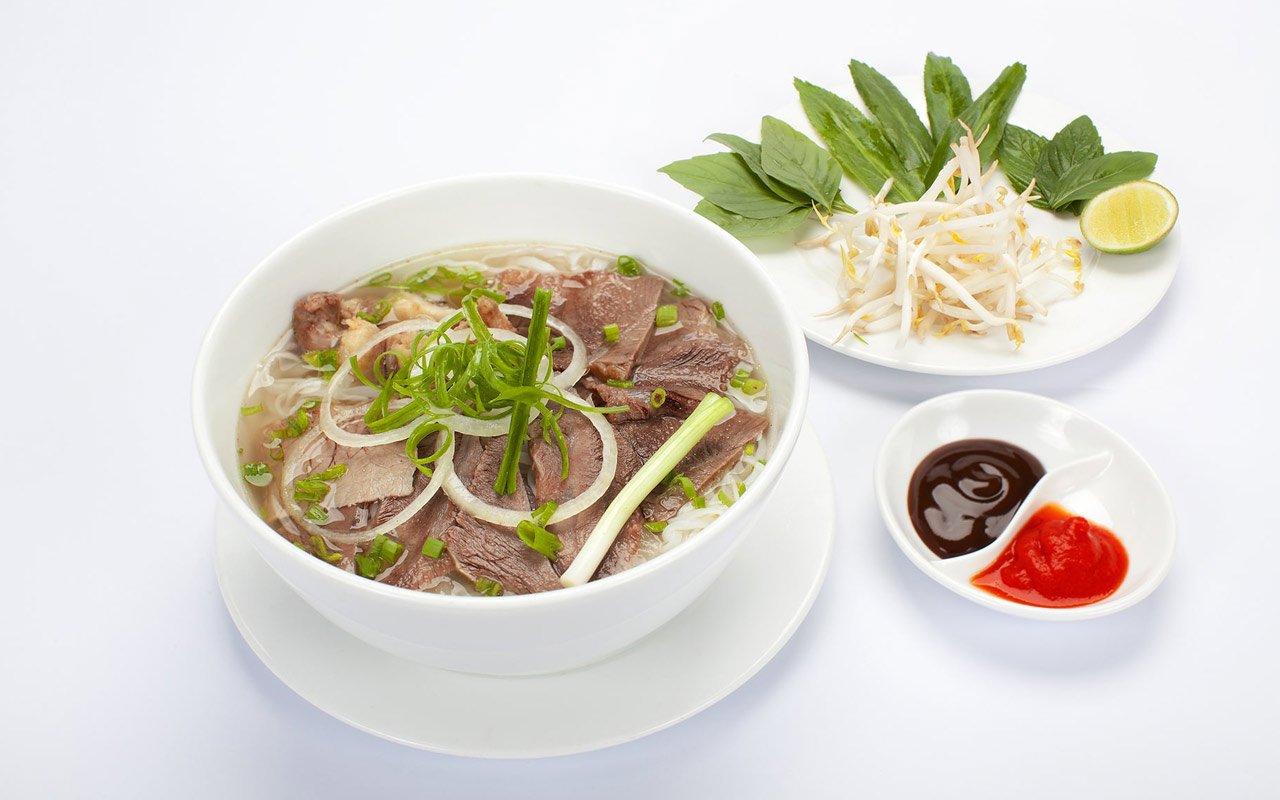
Vietnam’s food culture is marked by its rice, fish sauce, snacks, and regional diversity.
You will likely know what Vietnamese cuisine is like if you live in one of the multi-cultural cities of London, Paris, Los Angeles, Houston, Austin, South Philadelphia, or New Orleans.
Vietnam boasts one the best, most delicious, and healthiest gastronomies in the world. Vietnamese cuisine is based on rice, its derivatives, fish sauce, and vegetables.
Vietnam is blessed by many varieties of plants due to its tropical climate, long coastline, and huge range of mountains. The country produces a wide variety of fruits and vegetables that can be enjoyed every day.
A visit to a Vietnamese restaurant abroad is likely to bring you some light: You are most likely to receive a plate of fresh herbs first.
Vietnamese cuisine includes all the food and drinks of Vietnam and incorporates five basic tastes (Vietnamese: Ngũ vị). Each Vietnamese dish is unique and reflects one or more elements.
Vietnamese cuisine uses lemongrass, ginger, and Thai basil leaves. Traditional Vietnamese cuisine is known for using fresh ingredients, little oil or dairy, unusual textures, and the use herbs and vegetables.
According to a leading soy sauce manufacturer, fish sauce (or nước mắm), is the most popular table sauce in Vietnamese homes. It captures more than 70% of the market while soy sauce has a smaller share at 20%.
Because it is low in sugar, and almost always gluten-free because many dishes are made from rice noodles, rice papers, and rice flour, it is very low in calories.
The process of living is what creates culinary culture. It not only brings flavors similar to others but also transmits cultural values and traditions to the Vietnamese.
It is impossible to resist the lure of Vietnamese cuisine, even famous chefs like Anthony Bourdain and Jamie Oliver.
What is it that makes this tiny country’s cuisine so appealing and so fascinating? It could be the richness of its flavors. Is it the rich history? It is best to taste it but not through words.
These are the common features of Vietnamese cuisine
Vietnam’s country is divided into three distinct parts: the Northern, Central, and Southern. Each region has its own cooking style, with different tastes and flavors.
However, there are many things that they share. It’s the use of traditional spices such as fish sauce, shrimp paste, and soy sauce. Also, it is the importance of rice, and its by-products.
Vietnamese cuisine, as with many Asian countries, emphasizes a balance between yin, yang. For example, Vietnamese seafood is “cold” and is usually served with chili, ginger, and lemongrass.
In most parts of Vietnam, herbs and vegetables are also dominant features. Even if you have never tried it before, it adds a unique flavor to every gourmet dish.
Vietnamese cuisine is a perfect blend of French, Indian, and Chinese food, and it’s located on the Indochina Peninsula.
More than 54 minorities make up the Vietnamese population. Each minority has its own unique tradition and distinct food culture.
The food choices of ethnic minorities living in mountainous and highlands are less varied than those of the residents of the delta.
Their culinary skills are not inferior. Sapa, a hill tribe in the North, is well-known for its rainbow-colored glutinous rice.
Ethnic people have transformed the humble rice dish into something special, using local flora such as baby jack fruit, turmeric, yellow curry, green pineapple leaf, and purple glutinous rice leaves.
Other Vietnamese ethnic minorities’ specialties include Banh cuon trung Lang Son (thin, wide, steamed fermented rice batter stuffed with poached eggs), whole duck (vịt quay Lạng Sơn), and baby pig toasted (lợn sữa quay) with móc mật leaves…
Vietnamese food is generally made up of three elements: flavor, color, and decoration. Vietnam rarely has food with one color dimension. Vietnam is a country that has many colors.
There are vivid main dishes and milder rice dishes. Vegetarian dishes also come in a variety of colors. Gourmets can always see the sophistication and balance in Vietnamese cooking.
Ethnic groups in Vietnam
List of Vietnamese ethnic groups
- 01. Ba Na ethnic group
- 02. Bo Y ethnic group
- 03. Brau ethnic group
- 04. Bru Van Kieu ethnic group
- 05. Cham ethnic group
- 06. Cho Ro ethnic group
- 07. Chu Ru ethnic group
- 08. Chut ethnic group
- 09. Co ethnic group
- 10. Cong ethnic group
- 11. Co Ho ethnic group
- 12. Co Lao ethnic group
- 13. Co Tu ethnic group
- 14. Dao ethnic group
- 15. E De ethnic group
- 16. Giay ethnic group
- 17. Gia Rai ethnic group
- 18. Gie Trieng ethnic group
- 19. Ha Nhi ethnic group
- 20. Hoa ethnic group
- 21. Hre ethnic group
- 22. Khang ethnic group
- 23. Khmer ethnic group
- 24. Kho Mu ethnic group
- 25. Kinh (Viet) ethnic group
- 26. La Chi ethnic group
- 27. La Ha ethnic group
- 28. La Hu ethnic group
- 29. Lao ethnic group
- 30. Lo Lo ethnic group
- 31. Lu ethnic group
- 32. Ma ethnic group
- 33. Mang ethnic group
- 34. Mong (H’Mong) ethnic group
- 35. M’nong ethnic group
- 36. Muong ethnic group
- 37. Ngai ethnic group
- 38. Nung ethnic group
- 39. O Du ethnic group
- 40. Pa Then ethnic group
- 41. Phu La ethnic group
- 42. Pu Peo ethnic group
- 43. Ra Glai ethnic group
- 44. Ro Mam ethnic group
- 45. San Chay ethnic group
- 46. San Diu ethnic group
- 47. Si La ethnic group
- 48. Tay ethnic group
- 49. Ta Oi ethnic group
- 50. Thai ethnic group
- 51. Tho ethnic group
- 52. Xinh Mun ethnic group
- 53. Xo Dang ethnic group
- 54. Xtieng ethnic group
Vietnam is a multi-nationality country that has 54 ethnicities. 87% of Vietnam’s population is made up of the Viet (Kinh), who mainly live in the Red River Delta, central coastal delta, Mekong delta, and major cities.
Other 53 ethnic minorities, which number more than 8 million, are spread over mountain areas, covering two-thirds of the country’s land. They also cover the South and North.
The largest ethnic minorities are Tay, Thai, and Muong with around 1,000,000 each. Brau, Roman, and Odu have several hundred each.
Vietnam – Fatherland for many ethnic groups. Ethnic groups and children of Lac Long Quan-Au Co.
According to legend, 50 children followed father Lac Long Quan to the mountains, 50 children followed Au Co’s mother to the sea
Together, they expanded the mountains and rivers “Three Mountains, Four Seas, The Best for the Land”, with its mighty mountains and forests and vast plains.
Ethnic groups that have lived for a long time in the country have a history of patriotism, coordination in conquering nature, and social struggle, throughout the country’s history of the foundation, building, and development.
Natural conquers history is considered epic. It represents the creation of life and vitality that overcomes all obstacles.
Different natural geographical conditions (geomorphology and land, climate) have led to different treatment methods for nature.
Ethnic groups in the midland and plain grow water to rice. They build villages and hamlets, with the central house, well, and banian tree.
The surrounding green thorny vital bamboos trees are the lungs of the community. Plain, village, and farming are all inspirations.
They provide the “powder” for loose-fitting blouses, pink blouses with conical caps, the melody of velvety South folk-song, and high-pitch South Folk-song in Mekong Delta.
Ethnic groups live in mountainous regions and grow water rice. They also have on-land production to cultivate rice fields. Maize is their main crop. In the beginning, they plant long-term industrial trees (anise and cinnamon trees) in order to replace natural forests.
They live in houses built on stilts and wear indigo-colored trousers, dresses, and shirts featuring various forest flowers, animals, or other designs. Many ethnic minorities have a habit of drinking wine from jars through pipes.
This is a sign of the rich community sentiment. People are impressed by the heady aroma of alcohol and human love.
Tay Nguyen – Central Highlands, Tay Bac, has a variety of forest clearing methods. This is a pre-industry behavior. The Highlands have tropical weather, so cultivation is mostly done in the summer and fall.
Mountainous people have long developed overlapping crops to maximize the benefits of the land’s weather and protect the land from erosion from summer rains.
The costumes are the result of skilled hands and the artistic spirits of girls. They include dresses, clothes in harmonious colors, a variety of styles, and clothing that is soft and easy to wear, suitable for use on terraces, and for traveling along hilly and pass roads.
There are many methods of cultivation that can be used to sustain forests. It is where magic and music are developed and a new land emerges.
Nearly everyone in the Central Highlands has a tradition of putting buffalos into Heaven to offer sacrifices and pray for Heaven’s support for human health, animals, and the growth of their crops.
It is also home to many mythological stories and epics, whose potential value can be compared to those of India and China but has yet been discovered and studied. T’rung and Krongput are two examples of ethnic groups that own stone musical instruments.
Combining traditional gongs with group dances is a popular way to entertain the public. Ethnic groups live off fishing along the coasts from the North to the South.
Every morning, fishing boats leave the shore and return to shore in the afternoon. Here, life is just as busy as it is for farmers in the fields.
People are everywhere in harmony with nature. Nature also fulfills them.
The Indochina Land is where you can find a gateway to the Southeast Asia mainland and Southeast Asia islands. Vietnam is a mix of many cultures.
There are three major linguistics families in Southeast Asia: the linguistics familial of Southern islands and Chinese-Tibeto.
There are eight different groups that comprise the language of Vietnamese ethnic groups.
- Viet-Muong Group: Chut, Kinh, Muong, Tho.
- Tay-Thai Group: Bo Y, Giay, Lao, Lu, Nung, San Chay, Tay, Thai.
- Mon-Khmer Group: Ba Na, Brau, Bru-Van Kieu, Cho-ro, Co, Co-ho, Co-Tu, Gie-Trieng, Hre, Khang, Khmer, Kho Mu, Ma, Mang, M’Nong, O-du, Ro-mam, Ta-oi, Xinh-mun, Xo-dang, Xtieng.
- Mong-Dao Group : Dao, Mong and Pa Then
- Kadai Group: Co Lao, La Chi, La ha, Pu Peo.
- Austro-Polynenisian Group – Cham, Chu-ru E de Gia-rai Ra-glai
- Chinese Group: Hoa, Ngai, San Diu.
- Tibeto Group: Cong. Ha Nhi. La Hu. Lo Lo. Phu La. Si La.
Each ethnic group’s voice creates different languages. However, because Vietnamese ethnic groups live close together, one group may be able to speak the languages of others.
The diverse culture of ethnic groups is referred to as the general unification rule, which refers to the rule of advanced country growth. It is like a common particularity in the common category of philosophy.
In the 10th century, the Viet people established a central monarchy. Early in history, the Cham people boasted a vibrant culture.
With the presence of different social strata, the Tay, Nung, and Khmer ethnic groups had achieved high levels of development.
The Muong, Mong, and Dao ethnic groups were governed by local tribal leaders. Many ethnic groups, particularly those living in mountainous regions, divided their populations into social echelons.
Many ethnic minorities were able to learn some farming techniques. They raised rice in swamped paddy fields, and they also irrigated.
Others were semi-nomadic and went fishing, hunting, collecting, and even did some farming.
Each group has a unique culture that is distinctive and distinct. The beliefs and religions of Vietnam’s ethnic minorities were also different.
A century-long partnership on Vietnamese soil has resulted in solid solidarity between ethnic groups.
In the first century of Vietnam’s history, there was a mutual complement in economic relations between mountainous and lowland people.
During wars of resistance to defend the country, this solidarity was unceasingly strengthened.
A common community was formed between Viet and other ethnic minorities through the collective struggle to defend and build the country, and mutual assistance in co-existence and development.
However, there is still a clear gap in material and moral life between those who live in the deltas and those who live in mountain areas.
This has also been true for ethnic minorities. Vietnam’s government has developed specific policies and special treatment to assist mountainous people in catching up to lowland people.
It also made great efforts to preserve and develop each ethnic group’s traditional cultural identity.
Presently, satisfactory results have been achieved with the programs of providing iodized sea salt to remote villages, establishing health facilities for rural children, fighting malaria, and setting up permanent residences.
Projects such as creating writing scripts for minorities and studying and developing traditional cultures of each ethnic group have also been realized.
Festivals of Vietnam
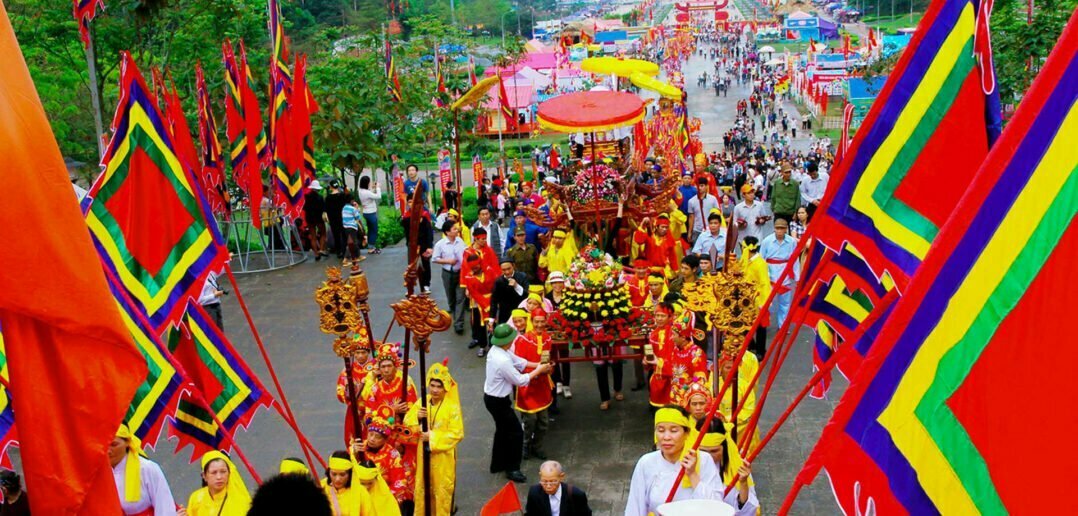
Vietnam has a distinct culture that has evolved over the millennia. It has many special festivals that display Vietnamese beliefs and traditions.
It is worth visiting some festivals in Vietnam, not only to admire the stunning natural landscapes but also to gain a deeper understanding of this peaceful country.
Vietnam is divided into three regions: the North (Central), and the South (South). Their festivals clearly display the distinctive characteristics of each region.
Vietnam’s spiritual culture has long been known for its traditional festivals. These festivals were created and maintained over many generations. It has been a part of our lives for many centuries.
Festival is an occasion that celebrates the Vietnamese traditional treasure, “When drinking water thinks of its source.” It is the place where you can honor the “gods”, or the historical figures who made a difference in the history of the country.
Vietnamese love holidays and festivals. Vietnam has a lot of major and small festivals. Festive season increases cultural value.
Traditions have seen a variety of events and festivals, from the simple to the more complicated and meaningful.
While some festivals and events are held to pay respect to national builders and heroes, others are designed to entertain the community and to commemorate wonderful events.
Each festival generally includes three steps: preparation, celebration, and ending.
Preparation is the most important. The first step is preparation. Before the festival arrives, they inspect worshipping objects, costumes, decoration, cleaning of worshipping places, and statues.
Some festivals can last for several days. Many activities are held, including a procession or incense-offering, and rejoicing.
The festival attracts people from all walks of society who wish to be part of its atmosphere.
The festival ends with the organization saying thanks to everyone and closing the worshipping space.
Vietnam has many festivals that are worth attending all year. To get to know the local culture, it is a good idea to join Vietnam’s festivals during your visit.
Holidays and other important days
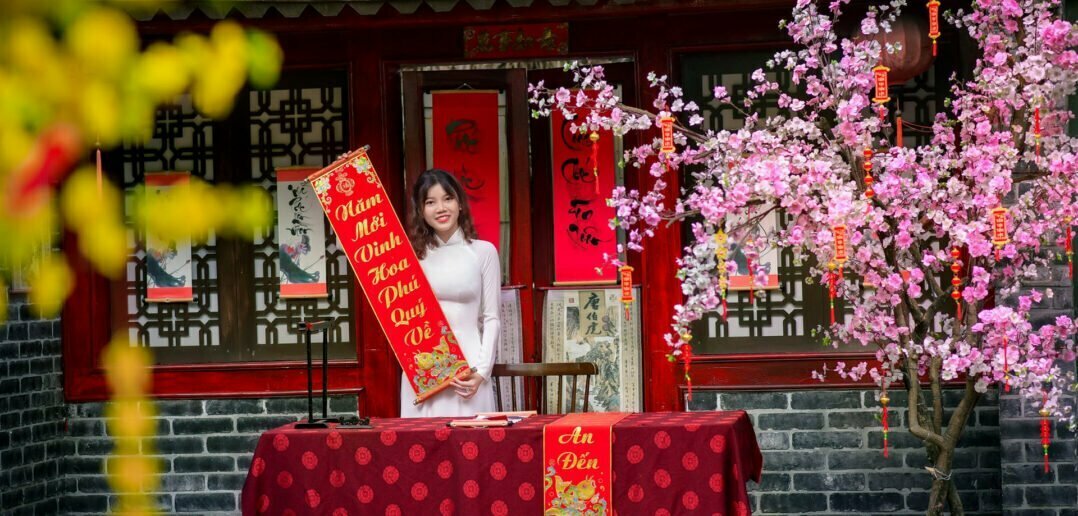
Vietnam celebrates many holidays. These include traditional holidays that have been celebrated in Vietnam for thousands of years. Modern holidays are mainly imported from Western countries.
Public holidays
| Date | English Name | Local Name | Length (days) | Remarks |
|---|---|---|---|---|
| January 1 | New Year’s Day | Tết dương lịch | 1 | International public holiday |
| From the last day of the last lunar month to 5th day of the first lunar month | Vietnamese New Year (Tet) | Tết Nguyên Đán | 5 | Lunar New Year Largest and most important holiday of the year, occurring around late January to early February |
| 10th day of the 3rd lunar month | Hung Kings Commemorations | Giỗ tổ Hùng Vương | 1 | Commemoration of the ruling of ancient Hung Kings (2879 BC–258 BC), according to Vietnam’s legend and history New holiday since 2007, occurring around April (adopted by the government on March 28, 2007) |
| April 30 | Day of Southern Liberation and National Reunification | Ngày Giải phóng miền Nam, Thống nhất Đất nước | 1 | Liberation of Saigon and reunification of Vietnam in 1975 after the Vietnam War |
| May 1 | International Workers’ Day | Ngày Quốc tế lao động | 1 | Also known as “Labor Day” |
| September 2 | Independence Day | Quốc khánh | 2 |
Vietnam’s Ministry of Foreign Affairs – regulates public holidays and has recently amended the labor code of the Socialist Republic of Vietnam. Vietnam recognizes 17 public holidays, 10 regional or local observances and workers have nine paid holidays each year.
Vietnamese labor laws state that if a public holiday falls on Saturday or Sunday, it is considered a paid holiday.
There are many local and regional holidays that aren’t officially recognized as paid holidays, including the anniversary of the founding of the Communist Party, the birthday of President Ho Chi Minh, and Christmas Day.
New Year’s Day is a significant public holiday. There are also several Tet holidays to honor religious freedoms and political independence.
Many Tet holidays fall on weekends, and the majority of them are observed in February.
Other holidays
- March 8 International Women’s Day – Quốc tế Phụ nữ
- November 20 Teacher’s Day – Ngày Nhà giáo Việt Nam
- December 25 Christmas – Giáng sinh/Nôen
- October 20 Vietnam Women’s Day – Ngày Phụ nữ Việt Nam
- June 1 Children’s day – Tết thiếu nhi
- 15/1 (lunar) Full moon of the 1st month Rằm tháng giêng
- 3/3 (lunar) Third lunar month’s third day’s festival Tết Hàn thực
- 10/3 (lunar) Hung Vuong Kings Commemoration Day Ngày Giổ Tổ Hùng Vương
- 15/4 (lunar) Buddha’s Birthday Lễ Phật Đản
- 5/5 (lunar) Midyear Festival Tết Đoan ngọ
- 15/7 (lunar) Full moon of the 7th month or Piety Day Rằm tháng bảy hoặc Lễ Vu Lan
- 15/8 (lunar) Mid-Autumn Festival Tết Trung Thu
- 23/12 (lunar) Kitchen guardians – Ông Táo chầu trời
Things You Should Know About Vietnamese Culture
Vietnam’s traditions date back thousands of years and are infused with respect for land, sea, people, and the environment. These are the essential facts to learn if you want to appreciate the beauty of this culture.
It takes time to build trust
This is a problem for business people who come to Vietnam with their ideas on how things should work. It’s not easy to build a business culture in Vietnam. It is built on trust and reputation.
Legal documents are fine but you will still be suspicious of your new partners until they get to know you. It takes years to build trust here, and only seconds to destroy it – so be careful.
No one wants to be seen as a loser.
Vietnamese people care deeply about how their friends, families, and coworkers perceive them. Do not do anything that could embarrass, or degrade a person’s reputation.
This could be arguing, ridiculing or confronting others, or bartering too aggressively. You won’t see any violent outbursts here.
Because aggression can cause both sides to lose their face, everyone is non-confrontational. A stern glance suffices for most minor infractions.
Academics are highly respected
It can be depressing to hear about the lives of students in Vietnam. However, this is the norm.
Young people must be in the top 10% of their classes to get into the job market. This booming economy offers amazing opportunities, but only those who are willing to work hard.
This means that students who graduate from higher education will need to attend long school hours with tutors and additional classes at night, especially English.
Respect elders
Vietnam will ask you your age, along with your name and nationality. The Confucian belief system is the foundation of their society. Wisdom and experience are highly valued.
This means that the older you get, the more respect and authority you will command. When you are with older people, it is important not to swear or bring up inappropriate topics such as death and sex.
The eldest person is served first at dinners.
Vietnam war history is sacred
This is something that some people have had to learn the hard way. Don’t make fun of Vietnam war heroes, or joke about the war.
The Vietnamese have a strong sense of humor but don’t laugh about the war years.
These were hard times for all of the country’s citizens. You must be cautious when discussing the colonial past of a foreigner.
Transactions can always be negotiated
Shopping in Vietnam can be a complex battle of strategy and subtleties. For foreigners, you should expect to pay an additional fee. Your best weapon in this situation is your feet.
Talk to the shopkeeper until they stop moving and then threaten them with walking away. A smaller profit margin is better than getting nothing for most shops.
Ghosts exist!
Many Vietnamese customs and traditions are rooted in their ancestral beliefs. Vietnam’s greatest fear is that the dead will not find peace in the afterlife. They’ll wander the streets as tortured spirits.
Many Vietnamese have a ghost story. It could be anything from a butterfly landing upon them at a funeral, to strange voices at night. Do not make light of ghosts and the dead, no matter what your views on the supernatural.
Vietnamese people are steadfastly optimistic
Vietnam is full of opportunities. With the belief that hard work today will pay off, people are working hard to improve their lives and those of their families. There won’t be many people complaining about their hardships.
So don’t worry too much about your own problems. You won’t find much sympathy if you are a foreigner with the means to travel internationally.
There is no tipping culture
In Vietnam, tipping is not expected. You can tip if the service was exceptional. But, be discreet. It’s best to keep it hidden under a plate or behind your bill.
If you tip too much, it can make someone feel lost or beggarly. Some people won’t tip you because they believe you made a mistake counting your money.
Food is an important part of Vietnamese culture
Vietnam’s rivers and mountains are deeply ingrained into the culture.
It is considered rude to leave food unattended, especially if you are staying in someone’s home where they have cooked it for you.
It is an insult to the land, and the workers who made it possible. Don’t eat more than you can handle and don’t forget to compliment others.
Vietnamese people don’t like outsiders criticizing their country
Vietnamese people are very open about discussing their social problems, including traffic, pollution, and academic cheating.
They are less patient when someone is criticizing them. This can come across as arrogant. It’s as if you are claiming that your country is superior to theirs. It’s annoying when it’s done that way.
You can make fun of the traffic jams, but you should also recognize that there are so many things to love about this country.

